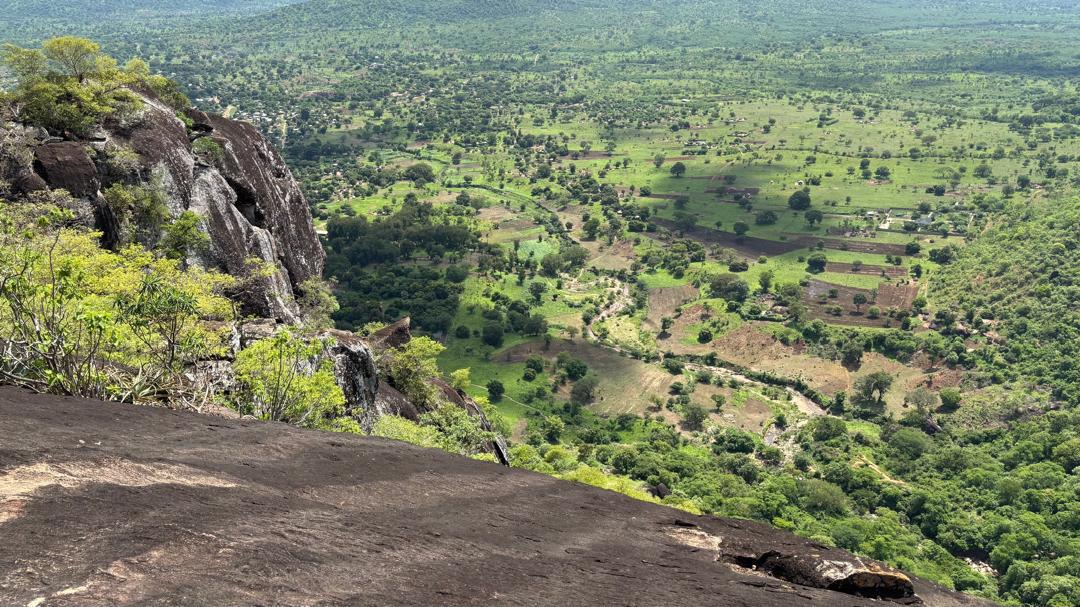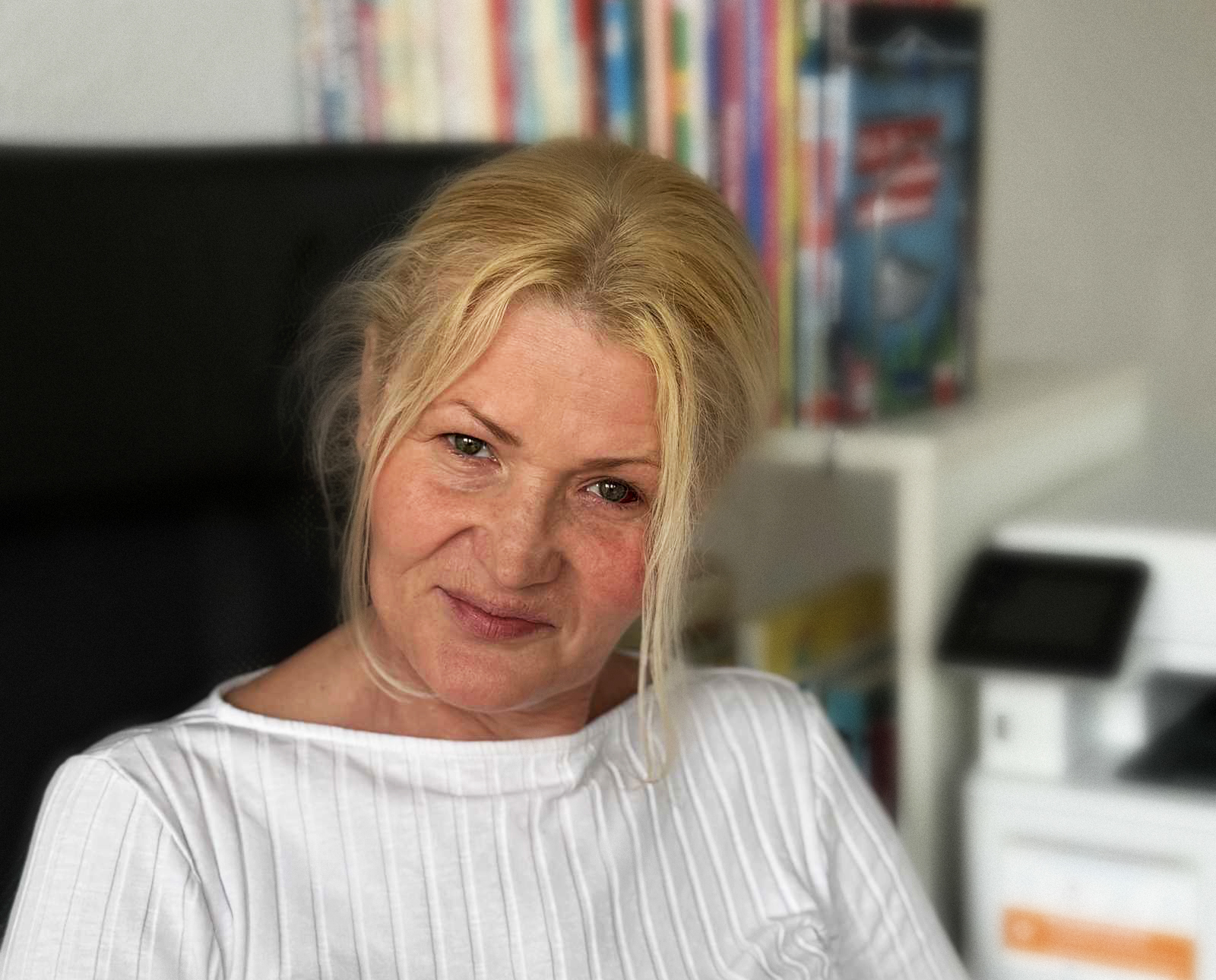Colombia
Refugees in their own country
By Gloria Ortega Pérez
They can be found at every intersection in the major cities: begging for money, selling ice cream or fruit, or washing car windows. Nearly all of them carry similar signs that state: “I am a refugee.” Most internally displaced persons in Colombia end up on the streets. Only very few are fortunate enough to find a regular job, for instance as a cleaner in an office or private home.
Millions of Colombians are affected. They are weighed down by indescribable suffering. These people have experienced the war that is rocking Colombia the hard way. Ignored by urban society, they populate the outlying districts of agglomerations, bringing along fear, hunger and insecurity.
Regular security forces and illegal militias have been fighting over land and access to resources in Colombia since the 1960s. What started as a guerrilla uprising against the state and a protest against social inequality, developed into a bitter war in which, over the years, drug trafficking became a key element.
Government troops and the two main guerrilla groups FARC and ELN (Fuerzas Armadas Revolucionarias de Colombia and Ejército de Liberación Nacional) aren’t the only ones involved. The powerful paramilitary group AUC (Autodefensas Unidas de Colombia), in particular, has been taking action against the rebels, at times even with the support of state troops. The AUC officially demobilised in 2003, but many members formed criminal gangs that are known as
BACRIMs and continue to be active.
They all are fighting for control of the coca-growing regions, which are relevant for cocaine production, as well as for access to coltan deposits. Warring parties massacre civilians and destroy villages. Often, rural leaders are murdered when they try to defend resources, protect the environment or demand that stolen land be given back.
Unsurprisingly, the violence has now claimed far more victims in the civilian population than from the ranks of the warring parties. According to conservative estimates, more than 600,000 people were murdered in the past 30 years by illegal militias or government security forces. Anti-personnel mines have killed or injured thousands of people, and thousands more are recorded as missing.
Faced with such violence, millions of Colombians had no option but to flee. Entire villages – especially those belonging to indigenous and Afro-Colombian communities – abandoned everything they owned to escape attacks, threats and intimidation. Many were forcibly expelled from their land and fled to the departments of Nariño, Antioquia, Cauca, Valle del Cauca, Córdoba and Bogotá. However, the mass influx of people is over-burdening local authorities to the limit. Infrastructure and social services cannot cope. Many refugees have become dependent on aid, and most live in extreme poverty. The humanitarian situation keeps deteriorating.
Ignoring the problem
The residents of the cities where the displaced persons seek refuge have no idea of what it means to have to flee one’s home. Many of them look on the refugees as freeloaders – people who have become accustomed to living on government support.
Marcos Romero directs the Consultancy for Human Rights and Displacement (Consultoría para los Derechos Humanos y el Desplazamiento, CODHES). He says: “Urban people do not understand what fight and conflict mean, and what huge problems the rural population is facing. Therefore the general public does not provide any support to the victims.” According to him, no one explains what has caused displacement, nor is there information on fight over access to resources. He adds that the government has done little to make society aware of how serious the crisis really is: “People believe that the problem has been dealt with in the law on victim protection and in peace talks between the previous government and paramilitary groups. But that is not the case. We are still in the midst of conflict.”
For eight years, officials consistently denied there was internal armed conflict. Accordingly, they also denied the existence of victims or displaced people. Álvaro Uribe, the former president of Colombia, virtually ignored the problem. He was equally unconcerned about breaches of human rights and international humanitarian law. Decisive action by Juan Manuel Santos, his successor and current president, led to the Victims and Land Restitution Law which was passed in June 2011. It recognises that an internal armed conflict is going on, and spells out rights of the displaced people who are its victims.
“This law is progress not only in legal terms but also in political terms,” points out Ángela María Robledo, a congresswoman and member of the Congress’ peace commission. “It defines as victims all those who have suffered harm through breaches of human rights or international humanitarian law in the course of armed conflict.” One year after enactment, however, the law still needs some refinement. Colombia still lacks rules on truth-finding, compensation, reparation and measures to guarantee that history is not repeated.
An important section of the law concerns rules on land restitution. It guarantees victims of expropriation the right to reparation. To date, however, there has been no agricultural policy to enable the people concerned to make a new beginning on their land or to recover financially. Therefore, the decision to return is not easy for displaced farmers in spite of the promise of land restitution. If they stay in the city, they are close to educational opportunities, schools and health centres. There are no such facilities in the countryside, where they have some land and could attempt to earn money using their skills.
Despite the reform, a lot remains to be done for the state to really take care of displaced persons. Public institutions must urgently take action to end this humanitarian tragedy. They must act in a coordinated, responsible and efficient manner, particularly in the areas of education, health, social security and agriculture.
From emergency aid to inclusion
So far, the state has provided only the bare essentials to displaced people, and its attempts at humanitarian aid have been mediocre at best. The government has not managed to provide the needy with roofs, to provide jobs and income or to encourage their independence in any other meaningful way. The quality of health care is poor, and places in schools are limited.
Only 10 % of the displaced persons have a monthly income above the equivalent of $ 250 so far. The other 90 % basically live in poverty. Only 13 % have decent housing, and most internally displaced persons do not get enough food.
As Romero from CODHES reports, the government has recently improved its act, moving on from miserable aid standards to a more consistent policy. The idea is to include the refugees in existing social care networks. Nonetheless, Romero criticises the government’s disregard for its most important duty: “It must guarantee that families find a livelihood in the rural economy or in the urban economy. They should either be allowed to return to their homes, or housing should be provided where they have fled to.”
It is challenging to find a long-term solution. The government needs to invest a great deal of money, and it will take generations to resolve matters entirely. Romero, however, insists that the country has the means for doing so: “Colombia is classified as a medium- to high-income country, but it also has the third highest level of inequality in Latin America, and the sixth highest worldwide.” He concludes that the real problem is injustice, not a lack of economic productivity. “I reject the idea of Colombia not having the money to take care of the victims. Above all we need a progressive reform of taxes and public finance, so the rich rather than the poor bear the brunt of the damage done.”
In his view, two things must be accomplished for the victims: there must be an action plan for inclusion and another one for reparation. “Reparation means people returning to the land that was stolen from them. Reparation is based on justice – the government can only hold those responsible to account and protect the victims if it finds out who stole the land. Inclusion, on the other hand, is based on solidarity and civil rights. Either the perpetrator or the state must pay the reparation.”
An end in sight
A formal peace dialogue between the government and the FARC guerrillas was started on 17 October. Conflict victims hope for an end to strife. They believe that violent displacements will stop once the two parties come to an understanding. At that point, moreover, victims could start campaigning for land restitution without fearing threats and murder. Social movements and solidarity would finally become possible again.
“To date, whenever rural people organise a rally, the state reacts as if it were a militia deployment,” says Romero. “When the major land owners take to the streets, however, everyone wonders if they are the paramilitary. War leads to distorted perceptions, but if we achieve peace, social movements could finally begin in all sectors and all regions. The heyday of trade unionism would dawn.”
Congresswoman Robledo is somewhat less enthusiastic. Even if armed conflict was to come to an end on paper, she warns, “the national government and the local authorities must continue to take action against the structural reasons behind the violent displacements.” In her eyes, the dispute between the government and the militias is not the only reason for people being chased from their homes.







